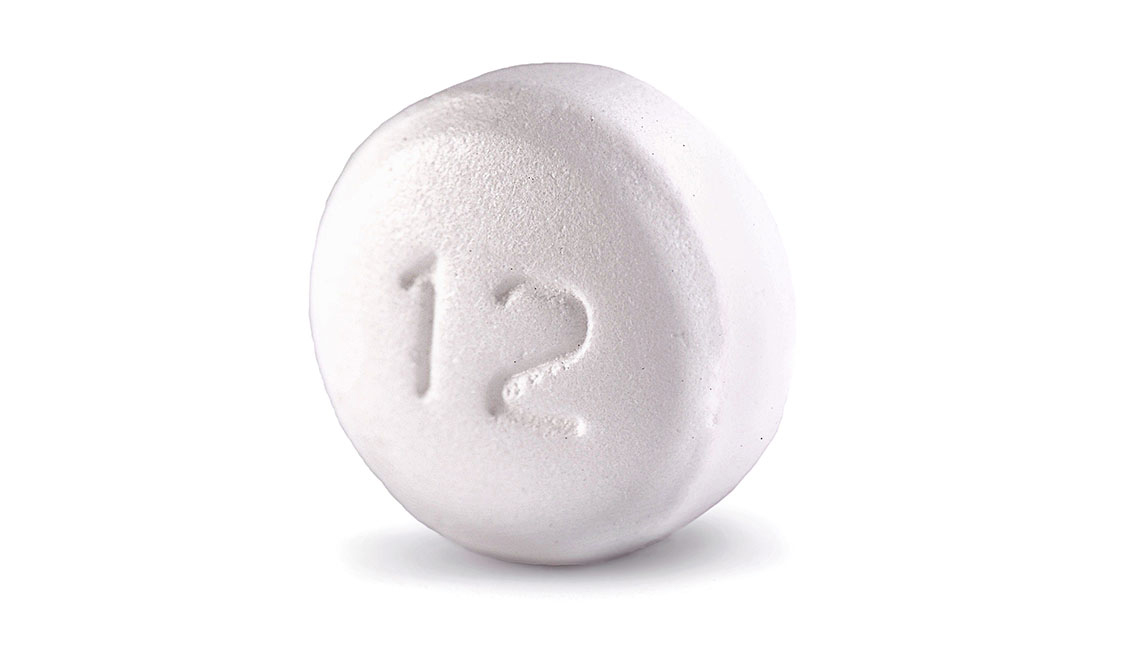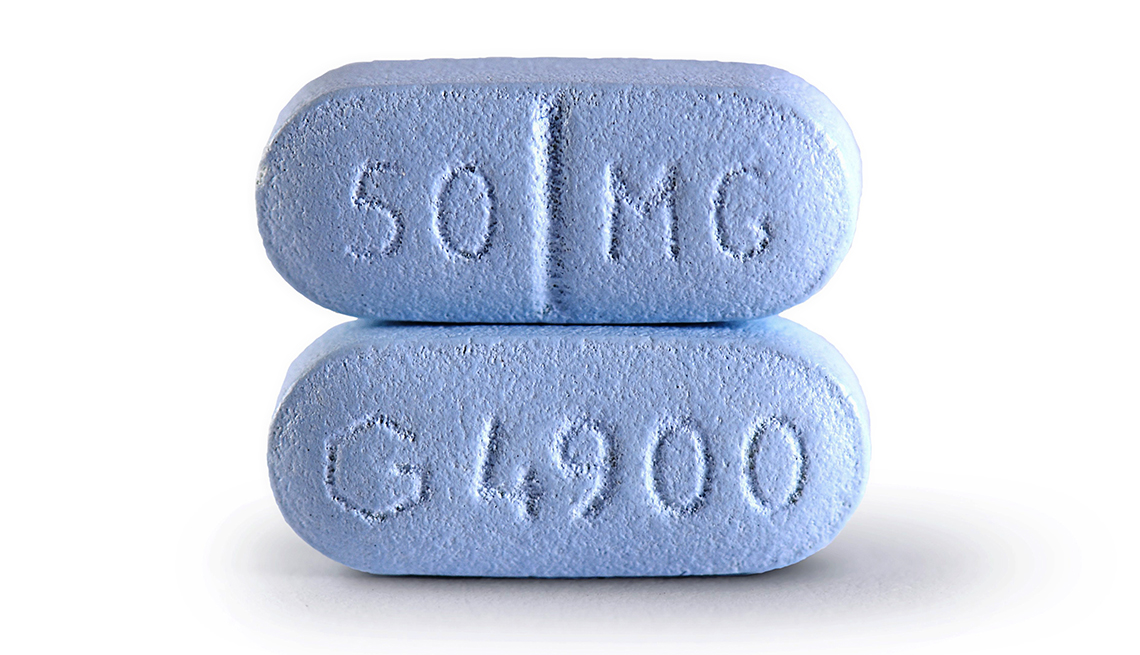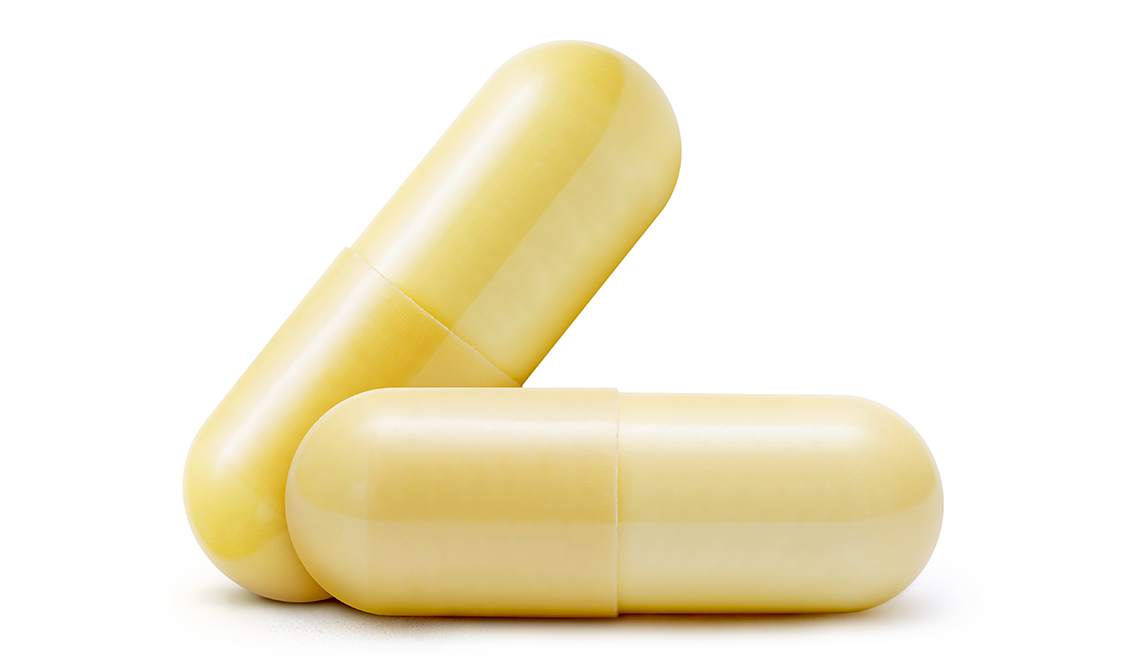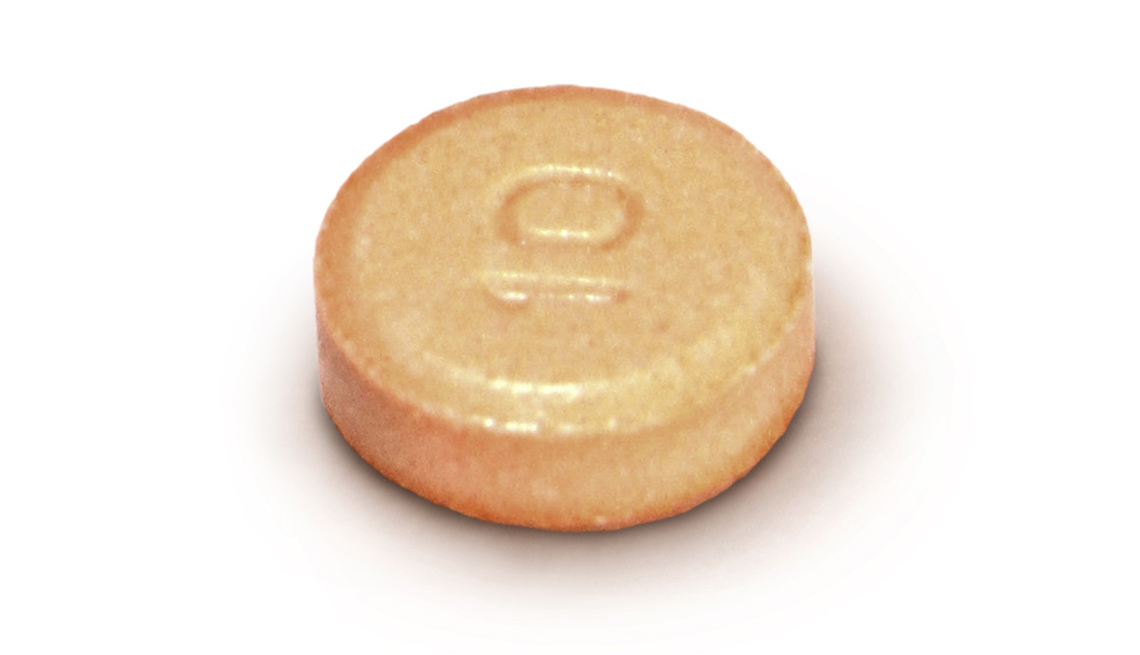What You Need to Know About Off-Label Drugs
Are medications that the FDA has approved for a specific diagnosis safe to take for a different condition?
En español | That little pill you popped this morning has survived an epic journey. It can take over a decade and billions of dollars for a new prescription drug to travel from initial formulation, through testing, past review by the Food and Drug Administration (FDA) and into your home. This is among the most rigorous approval processes for a consumer product in the world, designed to ensure the highest levels of safety and efficacy.
But here’s something startling. Once a drug finally gets approved for a specific use, it may be prescribed for different diseases or ailments, in different dosages, to other age groups, as a doctor sees fit. And it’s legal to do that. Physicians aren’t even required to tell you when they’re prescribing drugs outside of FDA guidelines (a practice called off-label prescribing, as the usage isn’t described on the label).
This is not an insignificant practice. A 2006 study (one of the few done on the topic) reported that an estimated 21 percent of prescriptions that office-based U.S. physicians wrote for commonly prescribed medications were for off-label uses. Today, off-label prescribing is business as usual for many doctors. Organizations such as the American Medical Association and the American Psychiatric Association strongly support the practice and affirm the ability of doctors to prescribe drugs off-label when based upon sound scientific evidence or sound medical opinion.
More Resources
- At DailyMed.nlm.nih.gov you can check whether the drugs you’re taking are off-label for your disease or medical condition. Enter the name of the medication, select the type you’re taking (pill, liquid), then click on Indications and Usages to see whether your diagnosis is listed. If you have questions, ask your doctor or pharmacist.
- At OpenPaymentsData.cms.gov you can check to see whether your doctor or teaching hospital has received money or something of value from a drug company.
But off-label drug use is complex, in part because there is so little data reported on this action. Studies are rarely done to see if off-label drugs match FDA-approved medicines in effectiveness or if there are additional side effects.
David Cavalla, author of the 2014 book Off-Label Prescribing: Justifying Unapproved Medicine, is a critic of the practice. “While the regulatory authorities are very strict about the manufacturing standards and documentation supporting the medicines we take, they do not regulate the way they are prescribed,” he writes. “This is a grave scandal at the heart of our health care system, an offense to the principle of evidence-based medicine.”
What is certain is that off-label prescribing is highly lucrative for the pharmaceutical industry. While drugmakers are largely prohibited from promoting off-label uses for their medications, that hasn’t appeared to stop them entirely. According to a 2018 report, from 2004 to 2017 pharmaceutical companies paid more than $11 billion in financial criminal and civil penalties for unlawful promotion, including of off-label uses of drugs. The landmark Oklahoma court decision in late August, in which Johnson & Johnson was fined $572 million, was in part related to the intense marketing of opioids.
Here is what you need to know about the practice and the role the drug industry plays.
What is Off-Label Use?
The use of a drug is deemed off-label not just when prescribed for a disease or condition it’s not approved to treat but also when it’s given to an age group, or in a different dosage, or for a length of time beyond FDA parameters.
Off-labeling is particularly prevalent in pediatrics and geriatrics (since fewer clinical trials involve those under 18 or over 65), oncology (where end-stage cancers prompt riskier treatments), and mental health (because many psychiatric disorders lack an official pharmacologic treatment). There are also thousands of rare diseases for which there are few on-label medicinal options.
Take the case of Lisa Rosendahl, who at age 21 was diagnosed with a rare brain tumor. Rosendahl underwent years of radiation and chemotherapy, plus 10 operations. She had her ups and downs, but the tumor was persistent. Jean Mulcahy Levy, a pediatric neuro-oncologist at Children’s Hospital Colorado, suggested treating her with an off-label combination of medications that included chloroquine, an antimalarial medication that’s been around since 1934. This combination of drugs had been used in only one other brain tumor case in this way and, of course, was not FDA approved, but it had shown promise in lab experiments.
“Lisa had been going downhill and probably only would have lasted a few more months,” says her father, Greg Rosendahl, a 70-year-old retired airline captain living in Boulder, Colorado. “So we decided to try it, and it had a dramatic effect. It worked so well that Lisa was able to go back to college and start looking toward the future. It was wonderful to see her happy and energetic again.”
Ultimately, the cancer started growing again; Rosendahl died at age 26, in 2017. But her doctor points out that patients with her type of tumor usually live just 14 months. Rosendahl survived for years in part due to the use of an off-label combination, her doctor says.
Rosendahl’s situation was unique, but medications are prescribed off-label every day in mainstream medicine. Consider:
- Metformin is the first-line drug for type 2 diabetes; yet it has been used off-label for weight loss, heart health, polycystic ovary syndrome and even possible cancer prevention benefits.
- Certain antidepressants are also approved for post-traumatic stress disorder and obsessive-compulsive disorder, but they are prescribed off-label for hot flashes and generalized anxiety. A 2017 study found that in Canada, just 1 in 6 off-label antidepressant prescriptions were backed by strong scientific evidence.
- Propranolol, a beta-blocker approved for treating high blood pressure and heart conditions, is used off-label to reduce anxiety.
So how do legitimate drugs like these, approved for specific purposes, end up being used for very different indications?
Medications Prescribed for Off-Label Uses
- |
- Photos
“A couple things happen,” explains Brent Forester, chief of the division of geriatric psychiatry at McLean Hospital in Belmont, Massachusetts, and president-elect of the American Association for Geriatric Psychiatry. “One is you have some creative doctors who understand pharmacology very well saying, ‘Hmm, I wonder if this medication that’s approved for something else because of the way it works in the brain might actually have, say, depression- or anxiety-relieving properties? Let’s try it.’ Or other smart doctors notice other effects after prescribing a drug.” For example, clinical researchers in the 1950s noticed that patients being treated for tuberculosis with a certain drug had “an improvement in their mood,” he says. “They felt better. And the antidepressant drugs we have today grew out of that.”
Doctors also learn about off-label uses by attending medical conferences, reading journals and abstracts, talking with colleagues and listening to patients. Often there is good supporting evidence for off-label use. Amid the clinical trials that won a drug’s primary FDA approval, there may be corollary findings that back a secondary use. Or the manufacturer may decide to conduct or fund additional studies and distribute the results.
Now keep in mind that once a drug is FDA approved, it sells for the same price whether it’s prescribed on-label or off. So any additional uses that arise mean instant bonus profits for its manufacturer. And sometimes there’s significantly more money to be made from off-label sales than on-label ones.
This partly explains why the off-label market is so huge. There’s little incentive for a drug company to invest extra money and effort to submit a supplemental New Drug Application (sNDA) to the FDA if doctors are already prescribing a medicine off-label or if it has generic competition and is no longer on patent. Even though this approval process is more streamlined, it can still take about a year and cost tens of millions of dollars.
“We’ve tried to make the sNDA process more efficient, especially in the oncology setting,” former FDA commissioner Scott Gottlieb told AARP in an April interview, shortly before his departure from the agency. “[But] a lot of times, the financial calculation of trying to get some of these subsequent indications onto labeling, especially for niche uses, doesn’t make much sense.”
21 percent of prescriptions written by office-based doctors for commonly prescribed drugs were for off-label uses
Pharma's Role in Promoting Off-Label Prescriptions
Up through the mid-2000s, pharmaceutical companies and their sales reps routinely promoted off-label uses of their products directly to physicians, often over fancy dinners or on expensive junkets — and sometimes with only sketchy supporting evidence.
But the FDA, working with the U.S. Department of Justice, cracked down on the practice, empowered by federal regulations and guidelines regarding the direct marketing of prescription medicines for their approved purpose. Many states have similar rules. But today the situation is still complex. Drug companies remain largely prohibited from raising the issue of a drug’s off-label uses, and over the past decade the FDA has successfully challenged off-label marketing by pharmaceutical companies in major cases (some led to guilty findings; others to large financial settlements). But court cases have narrowed some of the FDA’s oversight. For example, the U.S. Supreme Court has taken issue with violating the First Amendment right of “commercial speech,” a brief on the topic in the journal Health Affairs notes. The brief also points out that the FDA has limited capacity to review and monitor all drug company communications to doctors.
Kelly Bagby is vice president for litigation on health, housing, hunger and human services at AARP Foundation. She has successfully litigated cases involving the off-label use of antipsychotics on nursing home residents with dementia. Despite the FDA crackdown, the nursing home issue persists, Bagby says. She notes a Human Rights Watch report that said an estimated 179,000-plus residents in nursing facilities nationwide receive antipsychotics off-label in an average week, sometimes without their consent. This is despite a black-box warning (the strongest form of warning in the FDA’s arsenal) that such drugs are not indicated for people with dementia and can increase their risk of death.
“There have been criminal cases against companies such as Eli Lilly and Johnson & Johnson and its subsidiaries because they were basically paying to get these drugs to be used more prevalently in order to make a stronger profit,” Bagby says. “They got doctors very comfortable with prescribing them, and that’s why we do so much litigation in this area, to wake people up to the dangers.”
$11 billion paid in penalties by pharmaceutical companies for unlawful promotion, including of off-label drugs, from 2004 to 2017
Doctors we spoke with say pharmaceutical reps have generally backed away from off-label promotion. But given the potential profits in the off-label market, Cavalla says drug manufacturers may find other ways. For example, Cavalla says some drug reps learn how to cue doctors to ask off-label questions, which opens the door for their companies to send information that may or may not be balanced. Drug companies also fund studies and research, which can influence findings. And they organize seminars and conferences around disease education at which their products are featured. And there could be free samples, free meals and direct payments to doctors for speaking appearances or other services. According to an analysis in the medical journal JAMA, the amount pharmaceutical companies spent on marketing to health care professionals in 2016 reached $20.3 billion.
Cavalla says that because there’s so much money on the table in the off-label market, pharmaceutical companies may be willing to absorb fines as the cost of doing business, though he said this happens less often than before. (Pfizer was fined more than $3 billion from 2004 to 2014 for the “off-label or unapproved promotion of medical products,” according to ViolationTracker.org.)
Plus, the pharmaceutical and health product sector spends more on lobbying than any other U.S. industry ($4 billion over the past 20 years, according to OpenSecrets.org). Its agenda includes less FDA regulation and oversight. Some significant victories:
- A 2012 case (United States v. Caronia) ended with a judge’s ruling that conversations between sales representatives and doctors are protected under the First Amendment “for speech promoting the lawful, off-label use of an FDA-approved drug.”
- In 2017, Arizona loosened restrictions on off-label promotion with the Free Speech in Medicine Act.
- In 2018, Tennessee passed a similar law that says, “No state regulatory board may revoke, fail to renew or take any other action against a pharmaceutical manufacturer’s or representative’s, health care institution’s, or physician’s license solely for engaging in truthful promotion of off-label uses.”
We asked the Pharmaceutical Research and Manufacturers of America (PhRMA), which represents 35 biopharmaceutical companies, for an interview to discuss off-label drug issues. It declined, but its director of public affairs, Andrew Powaleny, sent a statement. In part, it reads:
“To exercise sound medical judgment in treating patients, health care professionals must understand the full range of treatment options, including both established and emerging information about available medications. … PhRMA and its members believe that the availability of a wider range of truthful and non-misleading information can help health care professionals and payers make better-informed medical decisions for their patients. … The ability to more freely communicate such information furthers public health interests.”
Doctors and Off-Label Rx
According to the National Center for Health Statistics, the average American is living almost 10 years longer now than in 1960, a fact that you’ve probably witnessed in your own family and neighborhood or experienced yourself. Part of that life extension may be due to drugs developed and supplied by the pharmaceutical industry. And despite the apparent Wild West nature of the off-label market, the medical establishment generally defends it.
6 Questions to Ask Your Doctor About Any New Prescription
“The whole practice of medicine is built around giving deference to doctors and the assumption they will always make good decisions for our well-being,” says Kelly Bagby, an attorney with AARP Foundation. “But that deference is also at the center of the problem. Patients sometimes need to have these challenging conversations with their doctor about any medications they are prescribed. Information is power when it comes to your health and body.” So the next time you get a new prescription, ask:
- What is my exact diagnosis?
- Is the prescription you’re recommending FDA-approved for that diagnosis?
- If not, on what grounds is your recommendation based?
- Will my insurance cover it?
- What are the potential side effects?
- Are there alternatives I should consider? What are the advantages and disadvantages of each option? (Also consider getting a second opinion.)
“It is not within the FDA’s authority to regulate the practice of medicine,” says Richard Schilsky, chief medical officer of the American Society of Clinical Oncology (ASCO), “and the FDA would be the first one to tell you that. It can’t regulate how doctors practice; it’s not in their regulations.”
This gets to the crux of the matter. In a drug marketplace that is increasingly complex and competitive, are doctors too overwhelmed and too busy to be learned intermediaries and, well, artists? Indeed, one survey of about 1,200 primary care physicians and psychiatrists found that many thought that some common drug treatments were FDA approved for certain uses, but, in fact, they were off-label.
Schilsky acknowledges the accelerating pace of change in medicine. “In oncology,” he says, “lots of new data comes out frequently. But the field can’t wait.’ So ASCO and Schilsky are taking things into their own hands with TAPUR (Targeted Agent and Profiling Utilization Registry), which aims to more comprehensively capture, evaluate and distribute the latest information about certain off-label cancer therapies that target specific gene alterations. If successful, it could be adapted to other areas of medicine.
“It’s incumbent on all of us to practice evidence-based medicine,” he says. “The medical profession has to be self-critical, to hold to standards and provide guidelines.”
But it is also incumbent on patients to understand the care they are receiving. “Consumers should always ask their doctors for the information for the particular use of the drug,” says Gottlieb, former head of the FDA. “It’s a very straightforward question: Is the drug approved for that use?”
There’s still a ways to go. When doctors interviewed for this story were asked if their patients care if a drug they’re prescribing is on-label or off, most answered no. “What patients care about,” Schilsky says, “is whether the drug is going to help them.”
That puts the onus essentially on the doctor, and that burden carries risks.
So the next time you are prescribed a new drug, ask your physician the six questions at right. Getting the answers before you leave the office will help inform your consent.
As a patient, that’s your right.
Joe Kita is a longtime health journalist and author of five books. He is a frequent contributor to the AARP Bulletin and AARP The Magazine.






